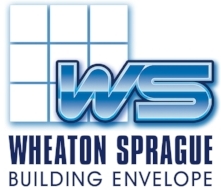THE PROFESSIONAL SERVICES PERSPECTIVE: PROJECT MANAGEMENT AND COMMUNICATION
/
Originally Published by John Wheaton, Feb 17, 2020, for Glass Magazine ( link here)
Hello Glass Nation! Welcome to blog No.1, 2020. I hope you are all well and the year is progressing in a positive manner. It’s been a very busy start for me and for Wheaton Sprague, with a lot of meaningful project work and new opportunities as well. I hope you can say the same.
I just have to say, before I go further here; can anything be more interesting and creative than the curtain wall/façade work that we do? I sat back in the middle of a design review meeting with a client and our team in December, and said, “Can anything be more interesting, and fascinating, than this?” We were looking at unitized curtain wall configurations, intermediate mullion layouts, transitions, what framing should “run through,” or not, talking through internal joineries, intersections, seal lines and structural items. I just couldn’t contain myself. One of the client leaders sat back and said, ‘Yeah. I agree with you.” That’s even more meaningful; sharing a common interest with others. Collaborating around curtain wall design still fascinates and motivates me after 35 years. It’s not gotten boring yet, so I think it’s going to continue in that manner.
Let’s continue from my last blog on project management and talk about communication.
PROJECT MANAGEMENT SPECIFICS: COMMUNICATION
As I stated last time, all companies bigger than the ability or availability of an individual owner, or group of owners, to manage at the project level, is dependent on project management to determine the success of their projects, their profits, quality, and ultimately, the success of failure of their client relationships. Let’s dive a little deeper into the communication topic.
Timeliness: Clients, staff, stakeholders, vendors, and more, need responses in real time. Relevant, timely, communication provides value. For me, that usually means either the same business day, or no later than one business day. I often reply within each morning and afternoon work session within the same day. Even if we don’t have an answer, at least we can acknowledge, let them know we are listening, and tell them when we will reply more fully.
Much communication is by email, so responding in kind can be quick and succinct. It’s also best to return phone calls the same day and at least leave a voice mail.
Email: Watch out! We just finished an in-house seminar on “The Seven Deadly Sins of Email” (With credit to XL Caitlin and Paula Selvaggio.) They include:
Self-criticism—"I messed up.”
Blaming—“You messed up.”
Complaining—Eeverything is hard and unfair!”
Colloquialism—“I sort of write the way I talk.”
Thoughtlessness—"I’m lazy.”
Self-indulgence—"I’m a know-it-all.”
TMI—"I write more than I need to.”
All of us can point to tendencies or failures along these topics. They key is to avoid and minimize these types of communications in our email correspondence. Remember, everything we write is discoverable and could be read by other parties. Keep it clean, document solutions, don’t blame, stick to the facts, keep words that serve a purpose, and delete the rest.
Read the wording two or three times before pushing “send.” Also, confirm that we understood what was said, seek to edit out speculation and exaggeration, provide only the necessary facts, and don’t vent in email. It’s easy to vent behind an email or the wheel of a car. The problem with email is that it’s maintained forever. And when you delete it, there’s still a recoverable record of it.Forms and contexts: There’s more forms of communication than ever before: Microsoft Teams, email, phone, letters, instant messaging, texting, DM’s, WebEx, Skype, face-to-face, Slack, and others. We’ve got to define the form, the context, and put the appropriate definitions, limits and boundaries in place to make them effective.
Value (or not): We know effective communication when we see it and experience it. No one teaches much about communication during our educations, unless we think that one “Speech and Communications” class is really going to make a difference. Communication, effective communication, is a value-adder and a differentiator. It can positively influence outcomes in all categories, including design, risk management, repeat business, project quality and more. It can also lead to the opposite outcome.
BEC NASHVILLE
Energy is building for this event and I’m excited for the new venue in Nashville. It’s a town with a lot of energy and should be a great experience. NGA/GANA is doing a great job of trying new formats and programs. I’m looking forward to reconnecting with many of you in the BEC community!

